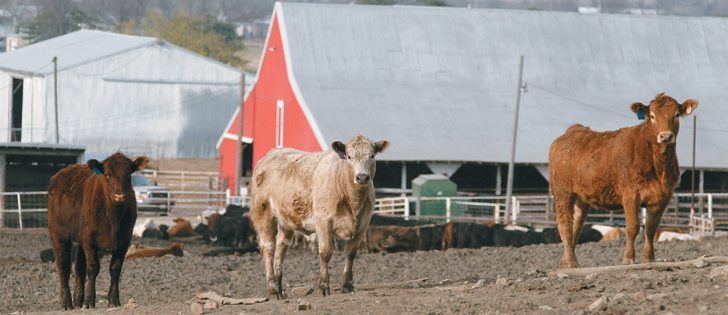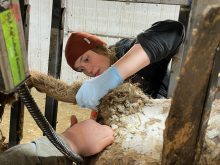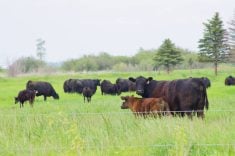Hormone implants in beef cattle have gained public attention in recent years, but a veterinarian says consumer concern over hormones in meat is not well founded.
Dr. Aaron Gibbons said hormones ingested in beef are small compared to the amount that is naturally produced by the human body and contained in other food, including vegetables.
Gibbons told the Lethbridge branch of the Alberta Institute of Agrologists that hormones have been used in the livestock industry for 50 years and there are no known ill effects from their use.
Read Also

Feds propose overhaul of chronic wasting disease control program
Chronic Wasting disease control program getting updated by Canadian Food Inspection Agency with feedback encouraged from producers.
An improperly applied implant will occasionally cause an abscess in an animal’s ear. He also said feedlot heifers without implants are more likely to be ridden by other animals in the pen.
Cattle hormones consist of estrogen and a type of testosterone, said Gibbons. Beef from a steer without implants contains eight nanograms of estrogen per pound — a nanogram is one-billionth of a gram — while beef from an implanted steer has 11 nanograms per lb.
Levels are similar in implanted versus non-implanted heifers. Beef from a pregnant heifer has 700 nanograms per lb.
For comparison purposes, he said one birth control pill contains 35,000 nanograms of estrogen, which is the equivalent of all estrogen from 5,500 lb. of beef from implanted steers.
Gibbons said technology has made food production more efficient and those who reject it must consider the potential environmental and economic impacts.
“We wouldn’t have the supply we have (without implants),” he said in an interview after his presentation.
“It’s just simple. We see in the industry heavier carcasses than we’ve ever seen. If we took away implants, unless we’re willing to spend a lot more, because that means we’ve got to have more cattle, we’ve got to have more land to raise those cattle, we’ve got to put more feedlots back in.… What impact does that have on the environment? All those things have to be considered if you want to take away some of the technology that we have.”
Gibbons said North America produces 30 percent of the world’s beef with 12 percent of the cattle, and implants are a key part of that production.
Cattle without implants are more likely to grade Triple A because they have more fat. Implants cause animals to grow more muscle rather than additional fat.
Contact barb.glen@producer.com
















